Do you feel like the world is becoming more automated? The automation paradigm in which IoT solutions play a key role is predicated on the assumption that machines can act autonomously and intelligently. And it is their ability to handle massive amounts of collected data that allows them to do so.
Collectible data includes all of the signals that animate and inanimate objects can send to IoT systems. As a result, the objects should be equipped with highly specific signal-generating devices in order to share information within the IoT.
Why specific? Because of the diverse range of signals they are capable of producing. Even a complex system as complex as the human body, which has been perfectly adapted by evolution, has various organs for processing various signals from the surrounding environment. We're talking about sensors, specifically sensors used in the Internet of Things.
1. What are IoT sensors?
IoT sensor data is information gathered by Internet of Things (IoT) devices. These devices could be anything from a car to a thermostat in a device. IoT's component enables these gadgets to connect, gather, and transport data across networks so that it may be examined and used to take appropriate action.
Two basic types of interaction are inherent in all available sensors: measurement and control. In addition, these types distinguish the direction of data flows moving either from or to the end points. It corresponds well to how living organisms work: every action creates a reaction. The behavior of machines mimicking living beings looks similar when the IoT modus operandi takes place. Learn more about how IoT sensors work.
However, the proportion between income and outcome data flows may significantly vary. And what determines the prevailing type of sensors in each case is a domain where one or another IoT system works.
2. How is data sent and collected by IoT sensors?
Different devices collect different sorts of data, and sensor data can vary. Things like temperature, the number of people in a room, activity levels, and the amount of water in the soil can all be measured by devices.
IoT sensors are often compact and energy-efficient, allowing them to function for years without requiring an additional power source like batteries. Both wirelessly and through a network connection, data can be transmitted.
Mother Nature endowed humans with distinctive patterns on their fingers. However, we lack an organ that can detect our fingerprints. This is most likely because humans have different advanced abilities for recognizing one another. Touch ID sensors in our phones were one of the most reliable methods of user identification until relatively recent times. This is an example of how the sensor industry converts something that is naturally available into data that can be collected.
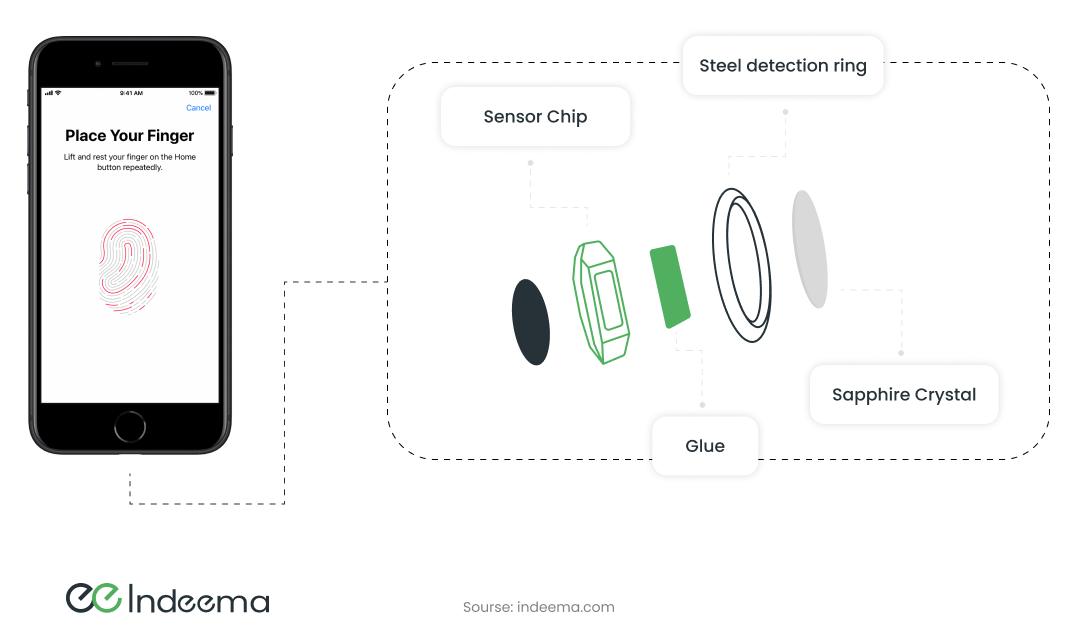
3. IoT Sensors: Types and Features
The smart IoT sensors list is continuously expanding since sensor manufacturers keep figuring out more and more signals that can be detected and utilized through various IoT solutions. New types of the internet of things sensors start combining the entire clusters of signals due to growing computation power of the IoT processors.
The advanced security & monitoring systems, for example, are not limited to just optical sensors - motion, temperature, infrared radiation, sound, and weight constitute the properties that can be detected, measured, and identified by the complex IoT solutions through appropriate sensors. Let's look at IoT sensors their types and features:
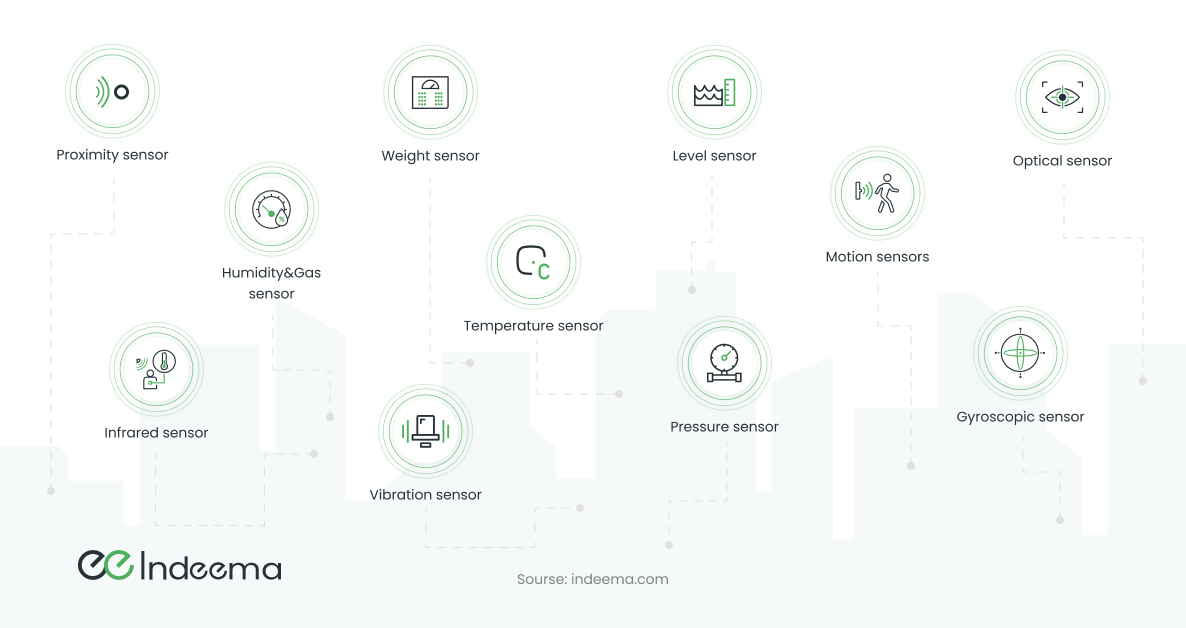
3.1 Proximity sensors
The exact distance between objects is what proximity sensors can detect. The scope of applications of such sensors is really huge due to the very property of space where we live - it is three dimensional. The methods of determining proximity depend on numerous factors of importation in every given case. That’s why proximity sensor manufacturers can choose between different basic technologies providing such types of sensors as capacitive, inductive, ultrasound, and photoelectric.
Everyone is probably familiar with how proximity sensors work when it is necessary to fit your car into a free parking spot in a city center where cars are usually parked bumper to bumper. An auto-parking feature inherent in some non-budget cars is a good example of the IoT application of the proximity sensors.
3.2 Infrared sensors
Infrared sensors can work in both directions: detecting external infrared radiation and emitting infrared radiation outside. Such sensors can detect surrounding objects through catching the heat the latter emits. Human body emits heat undetectable by our eyes. That’s why infrared sensors provide us with a unique ability to see through walls, for example. Many Hollywood sci-fi blockbusters (Terminator, Predator) used infrared vision effects to add impressive superhuman capabilities to their characters.
In real life, the IoT infrared sensors are widely used in wearables (smart watches) to measure pulse and blood pressure. Many IoT solutions in healthcare are based on the infrared sensors when a blood leakage should be detected or body temperature is to be measured remotely, for example. The industrial IoT application of infrared sensors implies remotely operated overheat alarming along with non-contact temperature measurement. Asahi Kasei Microdevices, Murata, and Intersil are infrared sensors’ brands, to name a few.
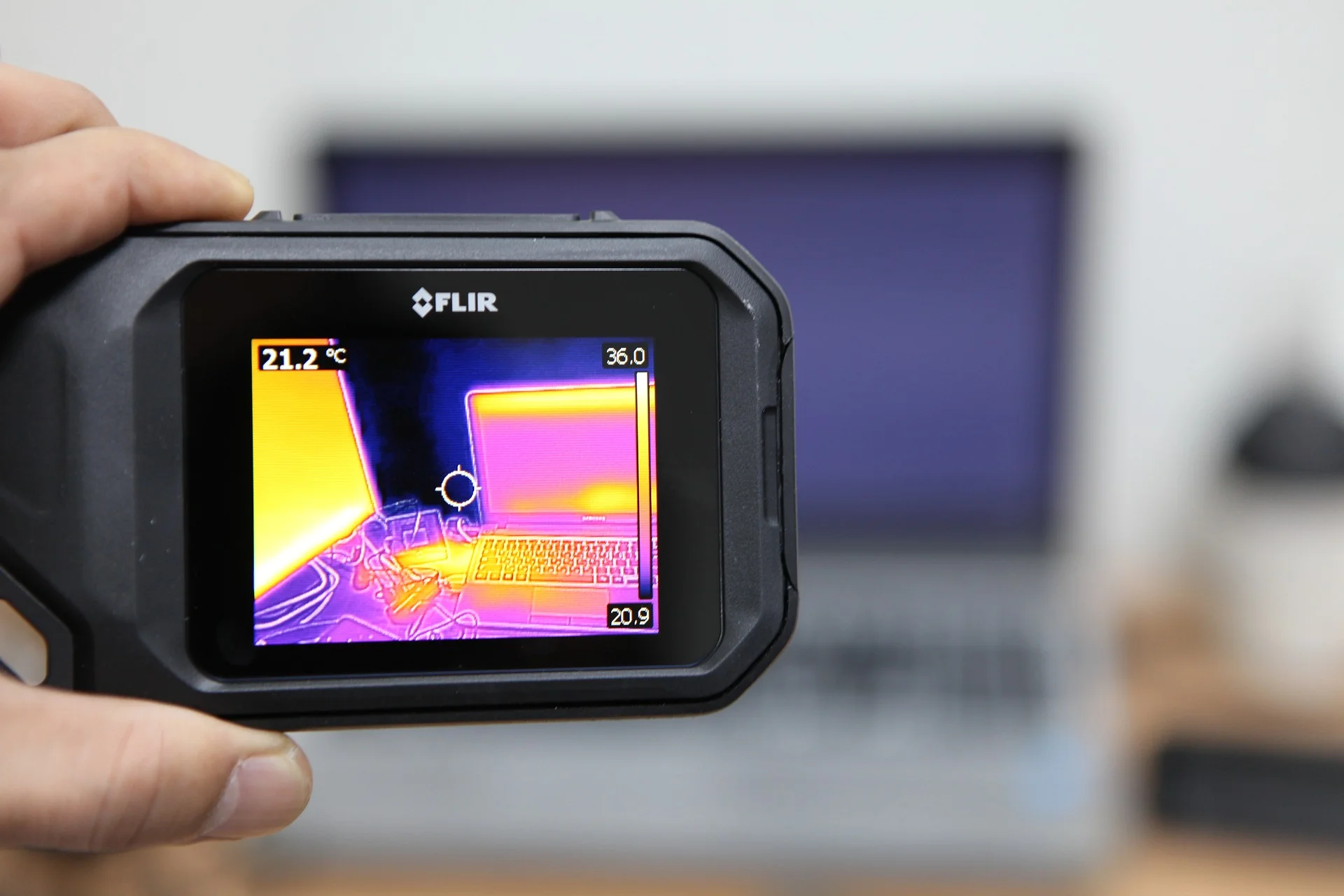
3.3 Humidity and Gas sensors
These two types of sensors can be grouped for a reason. Both can detect leakages of either water or gases. Both are used to be applied to various air quality control systems that become more and more popular with regard to emerging urbanization. The recent hype around Climate Change generates a growing demand for smart IoT solutions capable of monitoring living conditions both indoor and outdoor. Besides, one of the implicit impetuses for an extensive use of such gas sensors as, for example, CO2 detectors is the contemporary “staff efficiency rush” inherent in a corporate business sector where workability of personnel is directly correlated with the air quality in working premises.
The IoT-based smart ventilation capable of regulating CO2 content automatically is becoming a must-have feature for such public spaces as libraries, gyms, shopping malls, hospitals, and corporate offices. Needless to say that humidity and gas sensors are indispensable for the air quality control and monitoring systems.
3.4 Weight sensors
We live on a planet having quite significant gravity that imposes certain limitations on mass of physical objects. That’s why no onshore living creature can be more massive than elephants nowadays. Weight measurement is important in the construction sector. Recollect that awkward moment when you have to leave an overcrowded elevator somewhere in a business center due to an overweight detector which starts flashing if you are in. Namely weight sensors allow a secure exploitation of elevators. The IoT-based automation in every sector where bulk loading takes place can hardly cope without IoT weight sensors: overweight is dangerous for both dump trucks in open-pit mines and glass ampules at pharmaceutical enterprises. As regards our health, weight sensors are the integral parts of our bathroom scales that suggest us oftentimes to consider a less burger-intensive diet.
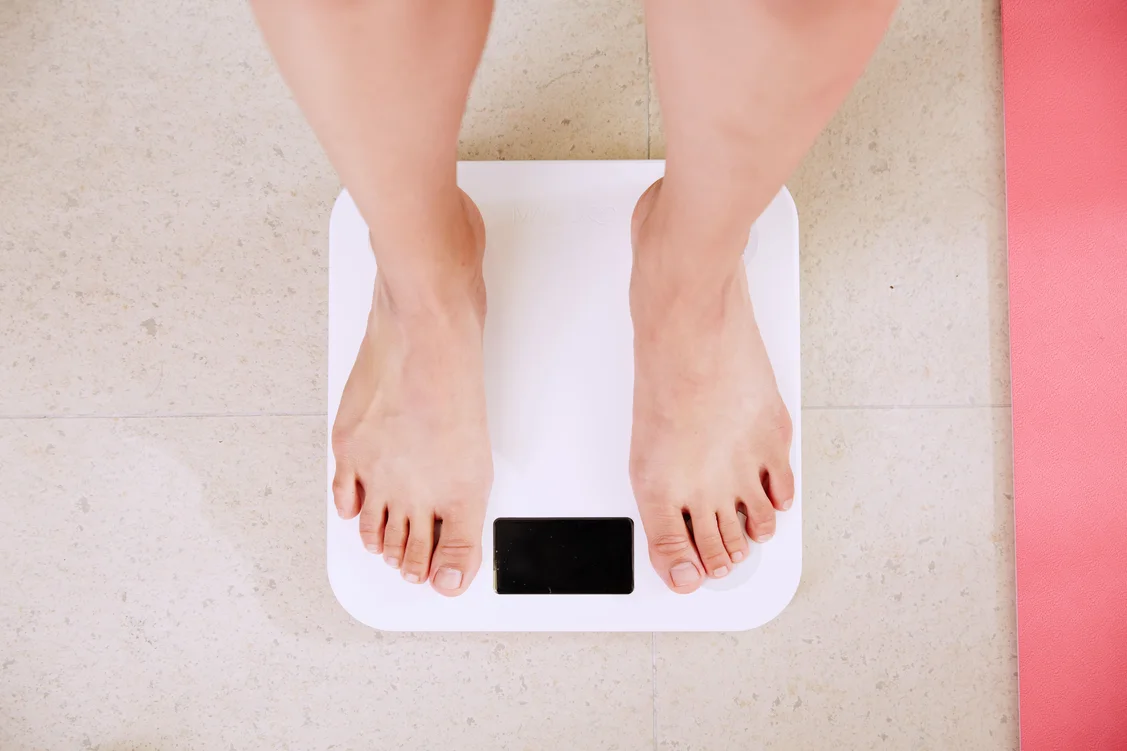
3.5 Vibration sensors
Vibration sensors help figuring out a secure level of resonance in the industrial equipment whatever type of motion takes place. It so happened that rotation became the main type of motion for any industry after the invention of a wheel about 2000 BC. Even very precise rotating mechanisms generate a more or less intensive vibration. Predictive maintenance along with self-analyzing capabilities of robotic production lines constitute a wide field for the IoT technology providers. Continuous vibration monitoring tells a lot about the current state of equipment.
The one who controls vibration controls both the cost-effective uninterrupted operation of equipment and its overall lifespan. Hence, IoT vibration sensors as an integral part of the industrial vibration diagnostic systems bring a hidden but significant profit through mitigating risks of accidents and unplanned downtimes.
3.6 Temperature sensors
Every automatic fire-fighting system includes temperature sensors. Smart IoT solutions for public premises (smart offices, smart stores, smart gyms, smart whatever else) cannot do without temperature monitoring. While a primitive but reliable bimetallic temperature sensor IoT can signal about only a significant temperature increase in case of fire, a precise measurement of temperature for automatic air quality control requires more sophisticated digital IoT temperature sensors.
Temperature sensors are fundamental for modern heating and conditioning systems both in premises and transport vehicles. What is a fancy smart thermostat in its essence? Nothing but a set of temperature sensors and data transmitters.
3.7 Level sensors
Yet another reason to remember about global climate change is more frequent flooding happening throughout the world. Arctic ice is melting, sea level is rising. Water level detection is becoming crucial for coastal areas. Early detection and forecasting of floods is the domain where IoT solutions help a lot. Level sensors constitute the primary end points from which water level data starts running to analytic software.
In general, level sensors are widely used in numerous fields where people deal with liquid substances. A fuel gauge in your car uses a similar level sensor as a huge gas tank at a fueling station contains. Automatic distribution of any liquid is often based on signals of two sensors: an upper level sensor and a bottom level one. Both capacitive and optical working principles are usually used in level sensors. We face effects of a level sensor several times a day visiting our toilets: a toilet tank stops getting water when its floating level sensor blocks water supply.

3.8 Pressure sensors
Those who travel a lot by air know well that unpleasant feeling when your ears seem full of cotton. A slight decompression in a cabin creates such a feeling. It means that the air pressure in an aircraft differs from our natural pressure level on the ground. Perhaps pressure sensors work a little bit incorrectly in this case.
Since pressure as a physical property belongs to both gasses and liquids, a list of domains where pressure sensors are used can be really impressive. Both household and industrial applications are present there. Automatic pressure control relates to a secure operation of such heating equipment as, for example, boilers, water heaters, and radiators. Blood pressure sensors are integrated in numerous smart devices for medical diagnosis. The tyre pressure indication is a fancy IoT feature inherent in modern smart cars.
Even a daily weather forecast is incomplete without barometric pressure. And in each given case IoT pressure sensors are engaged.
3.9 Motion sensors
As we mentioned in the beginning of this post, some types of sensors have quite a long history. Motion sensors have evolved from Chinese tubular bells to sophisticated digital devices operating on ultrasonic, microwave, photovoltaic, and infrared working principles. Security alarm systems having motion detection are widely used in museums, warehouses, dangerous areas, and in many other places where unauthorized entry is prohibited. IoT manufacturers equip both industrial and household lighting systems with IoT motion sensors to provide an automatic non-contact switching on/off the light. In addition to a positive user experience, a significant energy reduction can be achieved due to the smart lighting based on motion sensors.
Another promising domain where motion detection is gaining momentum is touchless gesture control of modern gadgets. Fitness trackers are capable of recognizing whether we stay, walk, or run. After getting rid of a 3.5 jack from iPhone 7, both Apple and the other smartphone manufacturers started eliminating physical control buttons one by one from their devices. The day will soon come when mobile gadgets become total screens operated by our facial expressions. Motion sensors will rule then.
3.10 Optical sensors
A sensor which measures the physical quantity of light rays and converts it into an electrical signal which can be easily readable by the user or an electronic instrument/device is called an optical sensor.
Optical sensors are loved by IoT experts, as they are practical for measuring different things simultaneously. The technology behind this sensor allows it to monitor electromagnetic energy, which includes electricity, light and so on.
3.11 Gyroscopic sensors
Gyro sensors are a type of sensor or device used to measure the angular rate or angular velocity. Angular velocity is simply the rate of rotation around an axis. It is a tool mostly used for 3-axis rotational and angular velocity measurement during navigation. The most crucial application is keeping track of an object's orientation.
Accelerometers are always used in conjunction with these sensors. Simply put, using these two sensors gives the system more feedback. Many technologies that have gyroscopic sensors installed can assist athletes in making their actions more efficient because they have access to the athlete's movement during sporting events.
4. IoT Sensors: Changes in Maintenance
When performing routine inspections of crucial assets, maintenance staff once had to physically alter conditions like temperature, humidity, and vibration. These manual tests required human error and could only be done seldom.
To fill both of those gaps and enhance maintenance procedures, sensors are used. They offer round-the-clock supervision and automatically record data. The necessity for personnel to be present while data gathering is reduced because this data may be accessed remotely. Automated sensors also produce acquired data on simple dashboards. Again, due to the great degree of automation achieved by sensors, data accuracy is increased. This significantly lowers human error and improves relevant measures, such availability and dependability.
5. The Value of a Reliable IoT Alarm and Monitoring System
An IoT network could have hundreds or even thousands of end devices (sensors), each of which is constantly delivering signals. It's critical to confirm that sensors are reaching the gateway promptly.
A well-functioning network requires reliable and scalable wireless technology, proper network planning and testing, and an ideal architecture.
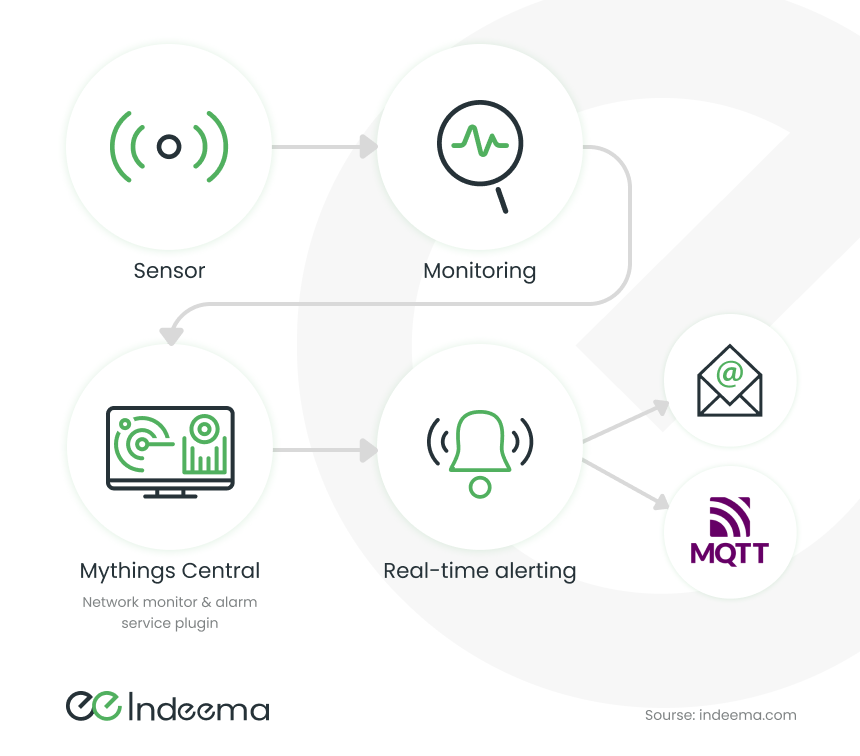
You may set thresholds in a decent IoT monitoring system to alert your team to activity that may be worth looking into. The following thresholds are useful:
5.1 Signal Level
Identifying the point at which your gateway might stop receiving signals from a sensor is a part of planning and testing. Setting a threshold that alerts you when the signal intensity approaches this level is helpful.
5.2 Drops Below an Acceptable Limit for the Signal
While it's crucial to know if the received signal has fallen below a given threshold, it's also useful to determine whether a sensor's signal strength has decreased from one message to the next as this could be a symptom of a problem.
5.3 Missed Messages
It's possible that the gateway briefly stopped receiving messages before starting to do so again. There can be some unforeseen interference or perhaps a sensor isn't working properly. In any scenario, it's critical to find out as soon as you can to make sure you don't miss any crucial information. You can find and address the sensor after you realize there is an issue.
5.4 Messages Are No Longer Being Transmitted
It's possible that a sensor has completely or intermittently ceased transmitting messages. For instance, a sensor that was designed to provide data every 10 minutes may have experienced a battery failure. 30 minutes can be the threshold you choose. If 30 minutes have passed with no communications, an alarm is set off, allowing your staff to look into the situation.
6. IoT Sensors: Integration Possibilities
Many different types of software, most notably a CMMS program, can readily integrate sensors. The sensors are almost constantly gathering data, but it still needs to be processed. Algorithms can process IIoT data by integrating these sensors with CMMS or other software. Teams benefit from this insightful data, which also helps management make better decisions.
A strong historical data collection is made possible by the use of multiple sensors that measure different aspects of an equipment's performance. The circumstances that an asset was in just before a failure or near miss can be described by a number of historical data sources. These data sources can then be used to create a model that anticipates failure situations, enabling the teams to take preventative action.
Conclusion
Irrespective of types of IoT sensors, any end point is where the IoT begins. Sensors generate primary signals that reflect one or another property of objects where sensors are installed. No sensors - no data. The wider variety of sensors appears, the more flexible IoT development is provided. We greatly appreciate our natural sensors - eyes, ears, fingers etc being afraid of losing any of our sensory capabilities.
The industrial sensors for IoT described above constitute just a tiny part of all available data-generating devices. Nevertheless, a deep expertise even in a given brief list of sensors enables any IoT solution provider to create powerful IIoT systems for a broad range of applications.


